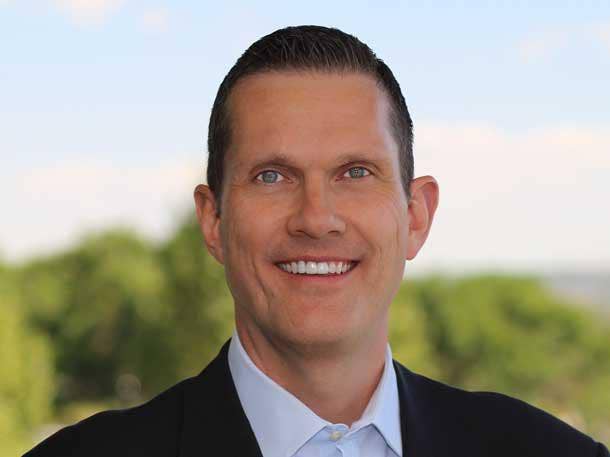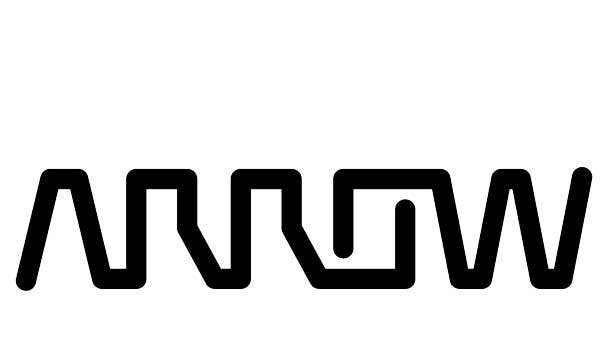Arrow COO Sean Kerins On Distribution’s Sweeping Changes And Why No More ‘Business As Usual’
‘We have the ability to play the role of aggregator where we can bring together a curated portfolio of third-party services that can be sold in conjunction with technology either on-premises or off. In that way, we help the channel partner offload the duties associated with managing a network of third-party providers themselves,’ says Arrow Chief Operating Officer Sean Kerins.

Platforms, Not Products
The role of distribution has gone through massive changes over the last few years as its offerings and services evolved from product sales and related deployment and configuration support to now encompass cloud-based offerings and services, recurring revenue opportunities, and the ability to tie it all together in a package that solution providers can bring to their clients while adding their own value-adds.
Sean Kerins, the former global president for Arrow’s Enterprise Computing Solutions and as of December the chief operating officer for all of Arrow, recently spoke exclusively with CRN about the changing role of distribution and how that in turn has led to huge changes in how Arrow works with channel partners. During the discussion, Kerins talked about the importance of platforms as a way to bring together multi-technology and multi-vendor solutions that may include on-premises and cloud products and services, and the importance of distribution as a means for aggregating them all together for solution providers.
For a look at the changes distribution is going through, and what’s in store going forward, click through the slideshow.

Define Arrow ECS for us.
Arrow ECS is the IT distribution arm of Arrow Electronics. It‘s evolving pretty significantly to things beyond what you and I would have once called ’core distribution’ to include new and different routes to market, additional services that we provide both pre- and post-sale at more scale, methods that we can engage both on-line as well as off-line, and that gets to some of the digital topics [partners] might want to probe. And we tend to think of ourselves as more as an aggregator, if you will, of relevant IT solutions, both in traditional markets but especially in new and emerging markets that we see as really important to our longer-term future.
You just mentioned new routes to market. What are some of those new routes to market that distributors like Arrow ECS are dealing with?
There‘s a couple thoughts here very relevant to Arrow just given who we are and where we play. One is, if you look at the market that I’ll call broadly ’IT as a service,’ we expect that it will be increasingly served at least in part through platforms and marketplaces. Platforms and marketplaces represent a new way to sell to and serve the channel as it relates to cloud subscriptions and cloud subscription management. And not only is that a new and different way to sell and deliver the value associated with an IT solution, but it also increasingly, I think, involves both traditional selling partner as well as new and different [partners] who play in different spaces, who have different capabilities as it relates to managed and subscription services, [and] who come from different backgrounds than the traditional VARs or resellers that we would have talked about five or six years ago. And that’s becoming an increasingly bigger piece of our business and portfolio.
The second thing that we‘re finding to be an interesting route and certainly an interesting market segment altogether is what I would broadly call ’the edge.’ I think the word ’IoT’ got a little bit over-used and over-hyped early-on. But when we think about ’edge,’ we think about the places where operational technology is now meeting information technology. That could be in a retail environment where a retailor is looking to transform and digitize the buying and customer experience. It could be on the factory floor where a lot of the traditional machinery is now being automated pretty significantly to apply things like machine learning and analytics in real time. It could certainly be in the automotive and transportation sectors where companies are embracing technology in a pretty significant way.

What’s unique in those routes to market for Arrow?
Those represent destinations for the compute stack that eight or ten years ago we weren‘t thinking substantially about. And if you think about the fact that Arrow is not just in the IT or the enterprise IT game, we’re also in the semiconductor game at a pretty significant scale, we’ve got visibility to these end markets from an OEM perspective that in turn point to edge opportunities that our brothers and sisters in the semiconductor business are selling into. We think that makes us pretty unique, ultimately, in the edge market opportunities.
And, in the same way that I talked about IT-as-a-service, the edge market is being served by new and different kinds of sellers as well. There‘s the industrial integrator, the company that grew up in the manufacturing environment that now needs to intelligently apply IT be it a data platform on-premises or off, or the networking that you need to create an edge-to-gateway, gateway-to-data center experience and the cybersecurity associated with it. So imagine that the data center environment that we once knew is now extending and morphing into all these different kinds of places, but ultimately the same disciplines apply. And I would call that certainly a new and different route to market for all the technology players that we represent.

On the platforms and marketplaces side, is Arrow ECS running into competition from public cloud marketplaces or MSP platform providers?
We view the future as a very complex ecosystem of many different players working together in many different ways that, until the advent of platforms and marketplaces, was tough to do efficiently and at scale. If you look at our ArrowSphere cloud enablement platform, we have a relationship with the world‘s five largest hyperscalers who want to be visible in that platform and who want to work with us to help take their offerings to market based on relationships that we already have in our traditional installed base given all of our relationships with all the solution providers that helped build that installed base. If you look at, say, the PSA (professional services automation) players, I see that more as opportunity for collaboration than I do competition.
While everybody will be looking to sell cloud in different ways and different forms, at the end of the day, the world of coopetition is here to stay. And that will be more evident when we get into these hybrid and multi-cloud deployments. Some of that will be done through a two-tier motion, some of that may be done through a single-tier motion which we can still participate in given the value associated with the features and functions of our platform. Some of that certainly will be done directly. But increasingly, I see even the large cloud hyperscalers looking at more entrenched enterprise environments with proprietary workloads that aren‘t so easy to move, and look to the people that are already the trusted advisors of those companies to work with in kind of a hybrid fashion. Our investments in ArrowSphere help keep us in the middle of all those ecosystem dynamics.

As the vendor community moves towards working directly with cloud hyperscalers in terms of, say, combining compute and storage across on-premises and the cloud, does that pose a risk for a distributor like Arrow?
We pay lots of attention to new and different trends as they emerge. But I‘m more of an optimist here than a pessimist because I look at how complicated it is to bring [together] two pieces of the solution, much less three or more. Imagine that there’s a piece of infrastructure sold on-premises to support a workload or application environment that concurrently requires backup and recovery flexibility that they didn’t contemplate in the past. Well guess what? That will be sold potentially via the cloud on an attached basis. The ability to bring together those two parts of the solution is a lot trickier in a world that is served in an as-a-service consumption model. An on-going cloud subscription represents an opportunity to engage a customer steadily and continuously vs. a solution that was sold all at once and deployed, and then people kind of just walked away. By staying engaged with channel partners and their customers more steadily, we’re going to remain in the middle. We’re able to help bring them the next solution. Whether it’s cloud-native companies or more traditional players that are looking to pivot their offerings to as-a-service equivalents, they’re still going to need that ecosystem of trusted advisors and channel partners we worked with for such a long time. And in fact, they’re all looking to figure out how they can leverage platforms as a route to market of their own.

Given the focus on services and the cloud, what happens to the hardware side of distribution? Is hardware a commodity?
The hardware that gets sold today on-premises, and even the equivalent versions that get sold as a service via a partnership with a public cloud, still needs really sophisticated work when it comes to workload assessment, configuration, and provisioning, not to mention the management of that on-going solution over time because it requires steady engagement for things like usage management and billing and post-sales support. I don‘t see a world in which hardware becomes a commodity any time soon. Certainly, in the endpoint markets, the desktop, notebook, laptop arenas, that trend has played out. But when you get into enterprise environments, and remember a big chunk of our business is still in the medium and large enterprises, things are not so simple. Most of what we participate in is sold vis-a-vis non-standard pricing, non-standards Ts and Cs (terms and conditions), things that are managed through exception by definition, and that’s even when a single supplier is involved. Now add to it multiple suppliers for the same solution. Now add to the complexity that one or two of those suppliers might be in the as-a-service game delivering their value in a cloud-native or cloud-like arrangement, and the role of someone who can pull those things together and do it digitally [is] essential…
Don‘t think about hardware in isolation. Think about it as one piece of a more complete solution. It’s what helped us get into software as significantly as we have because we looked at everything sold around hardware, and realized that software in turn would drag hardware, and vice-versa. So I don’t see us thinking of it as a commodity in the enterprise landscape any time soon.

How has the services side of distribution changed in the past year, and where do you see it heading going forward?
[Arrow’s] role in services has evolved. Certainly, resold services, i.e. those that vendors provide or are sold in conjunction with a product itself for deployment, hasn‘t changed, and we’ll continue to sell those services on an attached basis to help make sure they get deployed.
What has changed is, we have the ability to play the role of aggregator where we can bring together a curated portfolio of third-party services that can be sold in conjunction with technology either on-premises or off. In that way, we help the channel partner offload the duties associated with managing a network of third-party providers themselves. We‘re doing more of that than we’ve certainly done in the past. I wouldn’t call it terribly significant yet, but it’s becoming more meaningful over time.
And in some cases, beyond core distribution as we used to think of it, we‘re now being asked to play support services roles, for example, where a technology provider might decide that within a certain segment of their market, they’re really not interested in providing post-sales support themselves, and we are in position [to] provide that service on behalf of their channel partners and their end users in a way that gives us an opportunity for investment in scale. Don’t think of that as a different offering. Just think of that as an extension of the value that we provide upstream in the pre-sale and selling cycles. Think of these sort of enterprise IT relationships, especially as more of them become consumption-based in nature, as an opportunity for us to be engaged over a more complete lifecycle, as something that becomes more continuous.

How has work from home impacted your business?
I would say in two ways. One is, we obviously carry a portfolio that it turns out lends itself very nicely to work and learn from home use cases. [That includes] collaboration software that is sold and delivered via the cloud; the virtualization technology necessary to set up some of these remote and virtual work environments; the network technology, in our case the software associated with network performance; the cybersecurity that is required once companies revisit what these new work arrangements will imply and what the new cybersecurity strategy will be; [and] the necessary on-site hardware including compute and data storage to support these new work environments. We‘ve seen a piece of our portfolio really do well over the past several months as a result of that demand trend. It may not play out forever, but I think it’s still got some legs to it.
At the same time, we ourselves went through that same rapid deployment of our workforce and our resources and our capabilities to remote and virtual work arrangements. And so the good news is, we were already invested in some of those technologies such that we could very quickly pivot to remote working arrangements throughout the world as governments dictated without missing a beat from a service-level perspective. That‘s something I’m very proud of because that has allowed us to continue to execute on behalf of our suppliers as this thing has gone down over time.

Do you expect the work-from-home and learn-from-home trends to continue after the COVID-19 coronavirus pandemicends, or things to go back to the pre-pandemic normal?
The short answer is, I don‘t expect a return to the old business as usual. I think most companies will forever think differently about the nature of work, how work gets done, where work gets done, the role of digital in helping them embrace how they serve their customers. We’re ultimately not going to be a whole lot different. I think it’s important to be thoughtful and deliberate in thinking through what that should look like for the long term, but I think there’s certain things that we’ll think differently about, maybe forever. How much travel do we need to do? How often? Where? And how many people need to be involved? We’ve all learned now that collaboration technology is pretty effective. And so we’ve all become in some ways even more productive when it comes to engaging our suppliers and customers even more frequently than in the past.
I think that we‘re going to be smart about it. There are certain things you still need to do in an office environment, and we want to make sure we’re thoughtful about those functions and making sure that we’re still absolutely capable of doing that. At the same time, we want to be mindful that the nature of work will be more virtual and more flexible in the future. I think it’s important that, as you think about things like flexibility, that you also think about making sure you have the right things in place to maintain productivity and that you can still deliver on the mission of your company for your customers and your shareholders. So there’s a balance that has to be struck. But I think we certainly will think about it differently.

What are some things you see in 2021 that might impact distribution and Arrow ECS?
First of all, nobody can call the market itself, and I can‘t speak to our financial outlook. But what I can say is, at some point, the pandemic will subside. I wish I knew what that was, because if I did, I might be doing something differently. But I do think that when it does, there will be aspects of the business that do normalize when the broader market returns.
In the meantime, I think that we‘ll continue to see similar demand trends and a similar mix [of business] we’ve experienced in the last couple quarters continue to play out until it does. Digital itself more broadly will play a bigger role in our business going forward, as it should, so that we’re well positioned to respond to the right market drivers be it more IT-as-a-service, more revenue streams that are renewable in nature, the ability to engage on-line as well as off[-line] with our customers, all those things will become more important to our business over time and will guide our thinking in 2021. But we’re really comfortable with the strategy that we’ve laid out and how we’re going after it, and whenever this thing does subside, I think we’re going to be in an even stronger position than when we started.